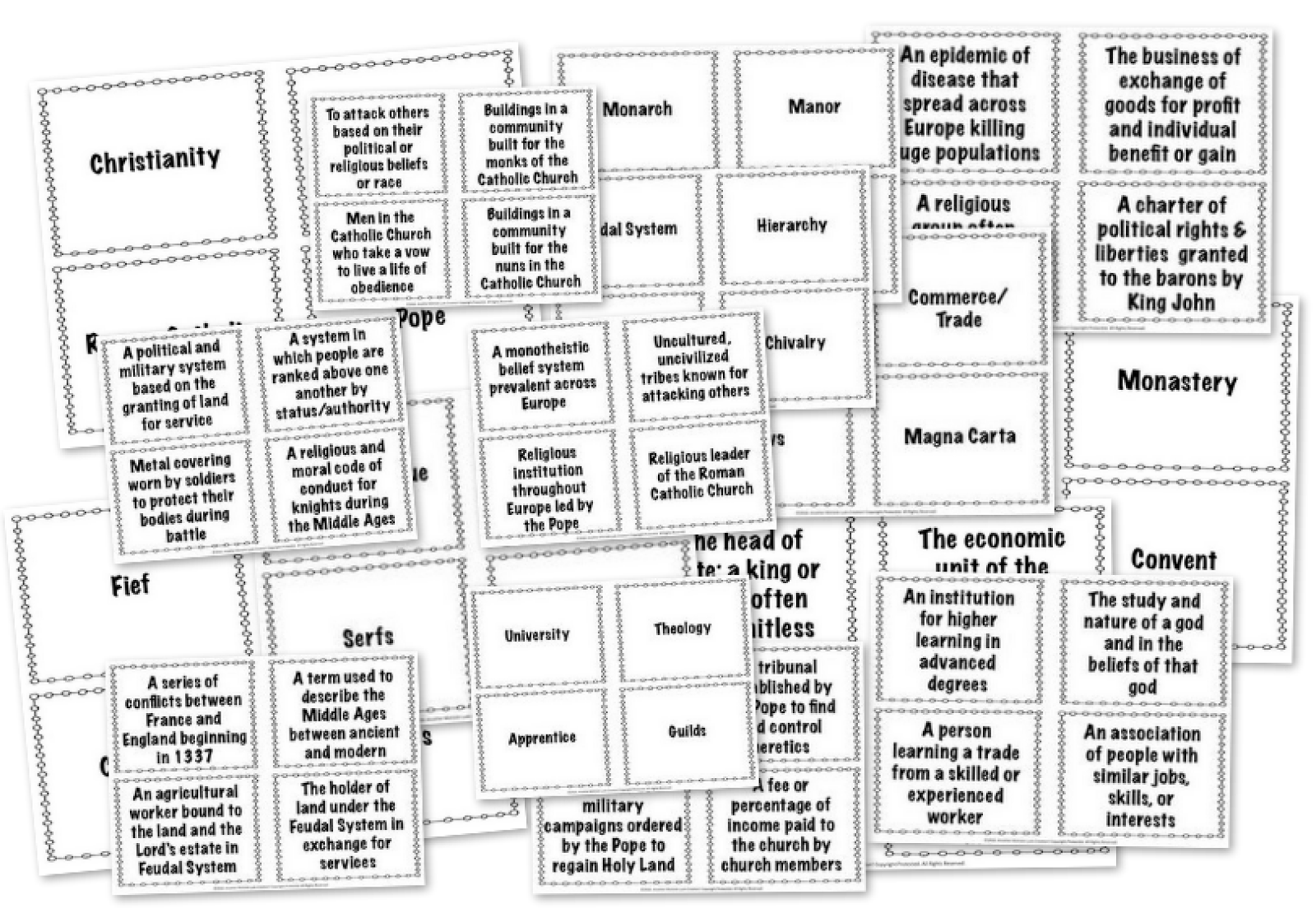This is part of my continuing series on Teaching the Standards in the Secondary Social Studies Classroom! In this post, we’ll focus on what strategies will work best for teaching the vocabulary standards from a Social Studies perspective. While we may think of vocabulary as an ELA lesson, vocabulary lessons in History and Geography can be so helpful in guiding students to a deeper understanding of historic events.

How Standards for Teaching Vocabulary Look
Social Studies vocabulary standards are typically focused on addressing keywords in each unit. They are usually written in general terms, and the actual vocabulary lists are left up to the teacher to determine. This can be good or bad! Most standards will look similar to the following:
Determine the meaning of words and phrases as they are used in a text, including vocabulary describing political, social, or economic aspects of history/social science.
The Value of Teaching Vocabulary Standards
Teaching vocabulary is an integral part of any classroom. In the Social Studies classroom, we have to delve further in, often addressing context and specific meaning of terms based on the time period, the historic event, and even multiple perspectives. Considering this aspect, Social Studies teachers must be deliberate and creative in their instruction of “words and phrases” in the lesson.
Tips on Choosing Vocabulary
First of all, the teaching of vocabulary must be deliberate. It cannot simply be “expected” that students will “get” the understanding of terms through their use within the reading or within the context of class instruction. The vocabulary must be its own lesson, one in which the stage is set for all else.
- Do not ask students for definitions in the Social Studies classroom. If they are learning vocabulary, they must describe the terms, their context, their uses for the unit, and their significance. Be deliberate in asking for a complete understanding of the terms rather than a short, dictionary.com response.
- Utilize graphic organizers for the instruction and processing of vocabulary. Divide the process into categories, such as direct meaning, varying perspectives, significance in time…
- Require repeated use of the vocabulary throughout the unit and beyond. Refer back to specific terms from previous units, make comparisons in meaning from time period to time period, and investigate the influence of different people and/or movements on the meaning of terms.
- Practice vocabulary as part of a daily routine. Begin class with bellringers that USE vocabulary effectively in application or for review. Assign exit slips, requiring students to use the terms appropriately in their response.
Creativity and Context in Vocabulary Lessons
More importantly, the teaching of vocabulary must be creative. Make it fun, or make it more engaging, rather than assigning students a list of terms at the beginning of each unit. Allow students to take on the terms for everyday use, just as they would take on new vocabulary needed for visiting a new country or meeting relatives from the home country! It must be an adventure, and one they will not soon forget, for the impression to set and the value to be gained.
Most importantly, focus on the context of the vocabulary for each individual unit you teach. Stress to students that meaning can change as context changes. Change over time is not only a historical construct, it is a very relevant consideration for words and their meanings. This is also true for location and how word meanings may be different (not just in translation!). One simple example: Boot. What is it? If you are in America, you are likely discussing footwear. If you are in the UK, you are talking about the trunk of a car. Location matters!

Strategies for Teaching Vocabulary Standards
- Use illustrations to help students learn vocabulary. With each description of a new term, have them add images or symbols to show their understanding. Even stick figures can make the impression to help a student recall a term and its meaning at a later date.
- Assign tasks with the vocabulary, such as creating a Pinterest Page or a Tweet for the term. Have students add “links” or “icons” to represent the terms and its meaning.
- Allow students to investigate terms or sets of vocabulary in small groups. They can discuss the meaning, work toward developing a way to “teach” its meaning to the rest of the class, and apply the meaning through a number of reporting or performance options.
- Skits
- Oprah/The Today Show/National Geographic Reports…
- Songs
- Videos
- Prezis/Powerpoints
- Webpages
- Webquests
- Travel Journals
- Make word walls more interesting and creative with visual images that well represent the unit.
- When teaching about the Civil Rights Movement, have students define and describe each term in “Protest Signs” or “Newspaper Headlines” for display on the bulletin boards or classroom walls.
- Allow small groups to create vocabulary collages with captions hidden below to explain the meaning and significance of terms. Display the works in the hall with a banner that asks other students to try to “Guess the Meaning!”
My Favorite Vocabulary Teaching Strategy
Allow students to PLAY to learn the vocabulary or to practice it for review. Play can be done individually, as pairs, in small groups, or even as a whole class.
- Turn your classroom into a Human Game Board for quick recall of term meaning or transform your wall into a Life-Sized Word Game.
- Play Bingo or other simple games for review of basic term meaning, or step it up a notch with “significance” clues instead of definitions.
- Divide your class into teams and play Charades with the terms until every term has been reviewed and all students are winners!
Final Notes
While the study of vocabulary is vital in the Social Studies classroom, it does not have to be the old pencil and paper activity of the past. Transform this standard into activities students will love to participate in at the beginning and end of each unit! Make your vocabulary lessons stand out to help reinforce the content you are teaching.
For a variety of Vocabulary Activities & Games, search for unit specific activities or visit the Games & Game Boards section of Michele Luck’s Social Studies.
Would you like more on teaching the standards in the social studies classroom? Link to read posts on each of the standards and on strategies to help you teach them.
Happy Teaching!
